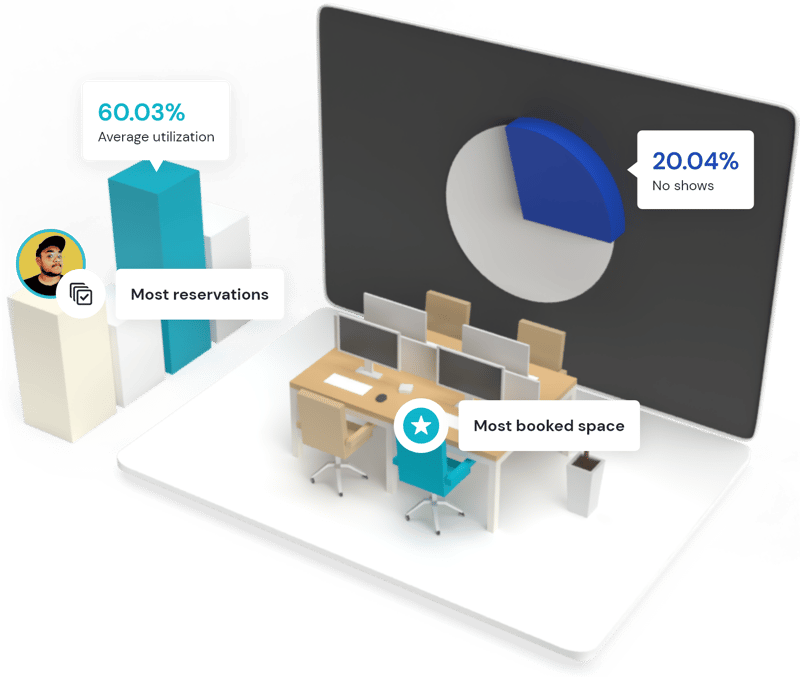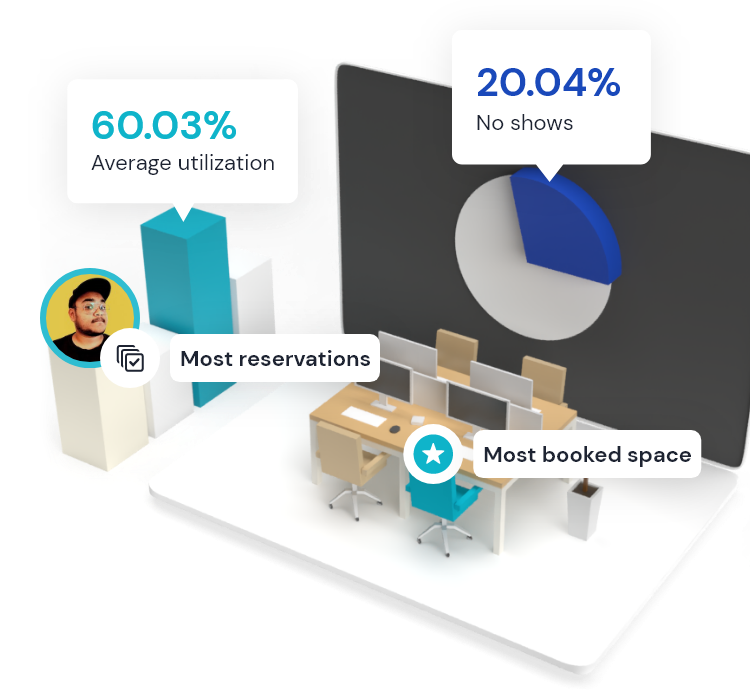91% of company leaders agree that data-driven decisions are imperative to business growth.
Only 57% of them admit to using data in their decision-making.
Office utilization analytics
The YAROOMS Office Utilization report brings clarity over metrics such as average office space utilization, the number of no-shows, the number of bookings, and many more. Using the heat map, location managers can see where in the office people tend to congregate (or where they don't spend time at all) and optimize accordingly.
Did you know? The average hourly space utilization among YAROOMS users is 9%. It seems that most of the companies have not fully rolled-out their return to the office plans yet.
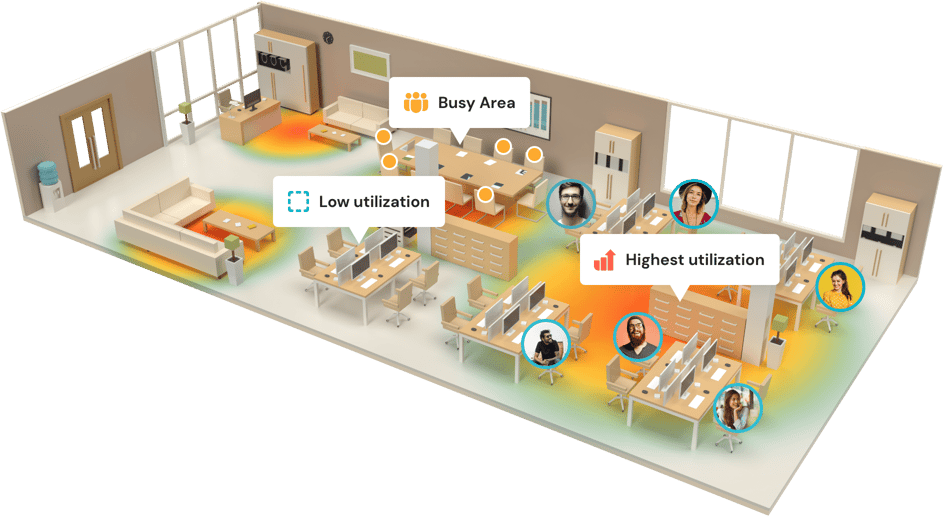

People analytics
Our People report provides insights on metrics such as the average time to check-in, the amount of spaces booked, etc. per user. Meanwhile, the Daily Presence report contains the list of people who have been present at the office on a particular day. Understand how people interact with office spaces to improve their experience at work.
Did you know? The favourite day of YAROOMS users for visiting the office is Thursday - that's the most-booked weekday, followed by Wednesday and Tuesday.
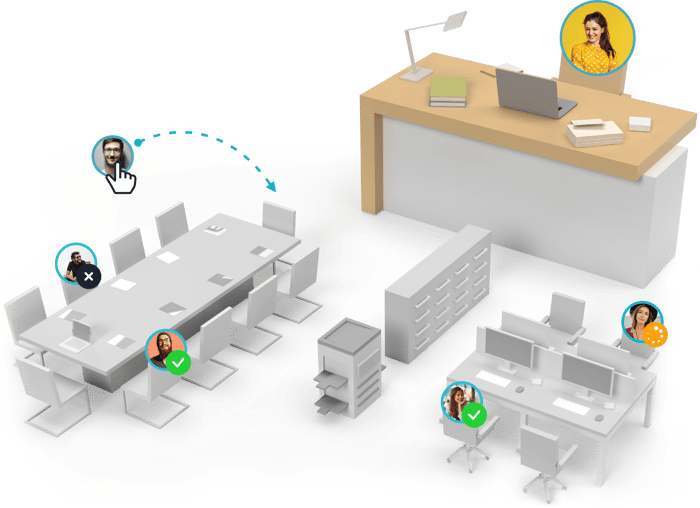

Employee satisfaction analytics
The Employee Satisfaction report is generated from the satisfaction survey, sent to your employees after their visit at the office. Here you can read employee feedback and “measure” the general happiness level. Compare it between people, user groups, locations, and observe fluctuations in time.
Did you know? YAROOMS users evaluate space booking experience in their offices with 4.9/5 stars. Embracing flexibility does make a difference!
Employee satisfaction analytics
The Employee Satisfaction report is generated from the satisfaction survey, sent to your employees after their visit at the office. Here you can read employee feedback and “measure” the general happiness level. Compare it between people, user groups, locations, and observe fluctuations in time.
Did you know? YAROOMS users evaluate space booking experience in their offices with 4.9/5 stars. Embracing flexibility does make a difference!
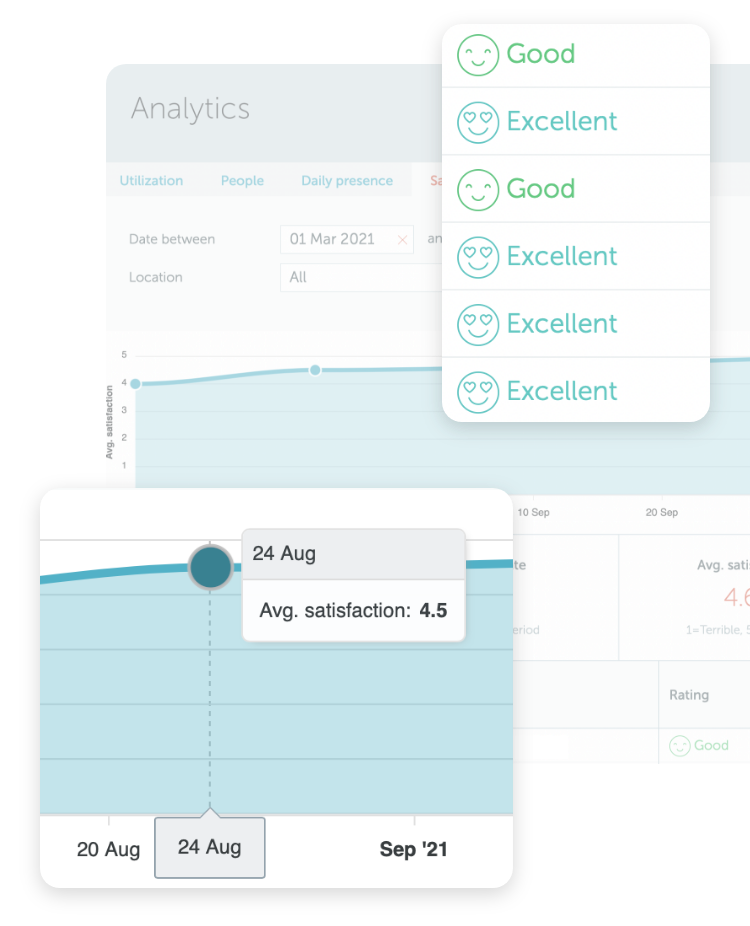
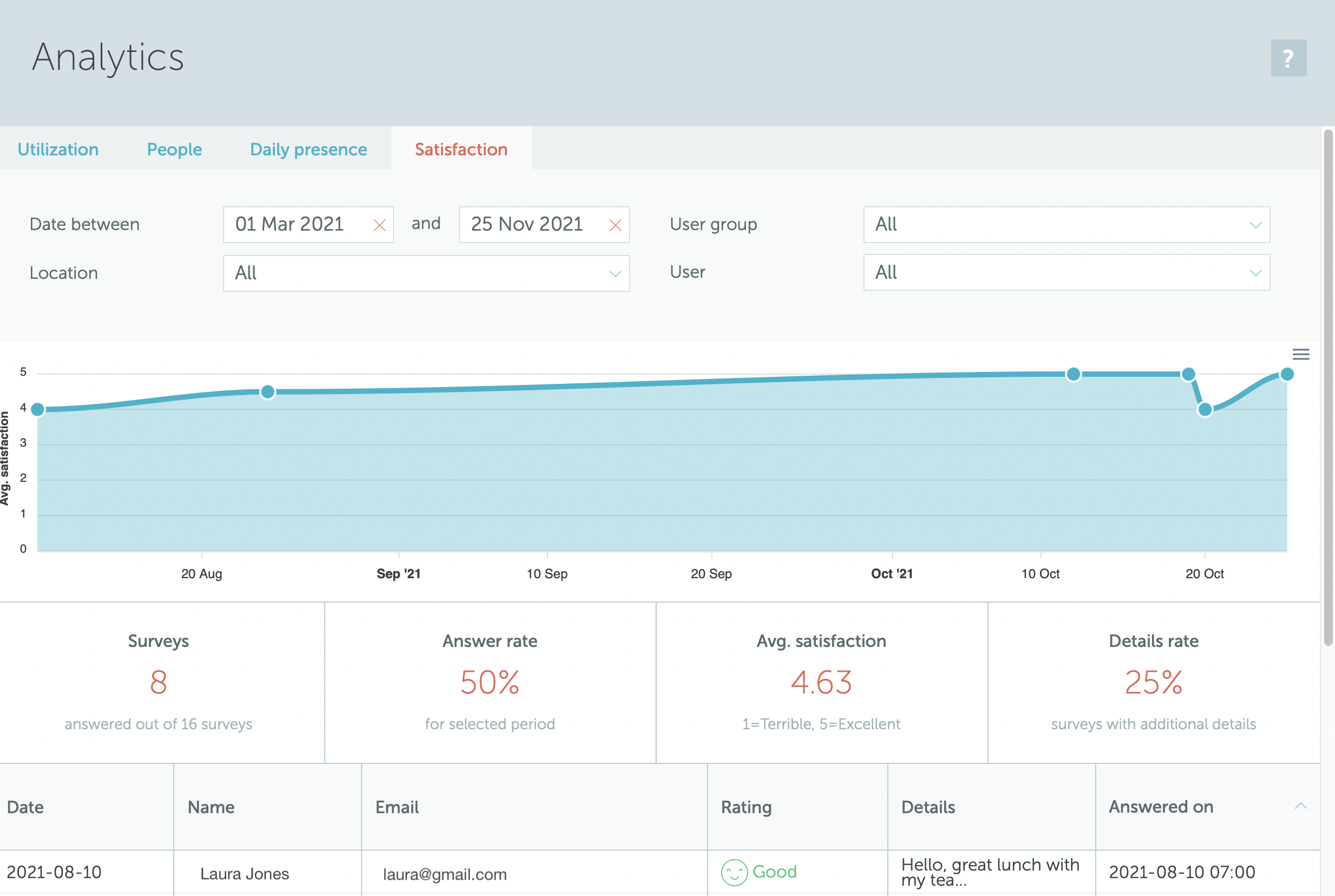
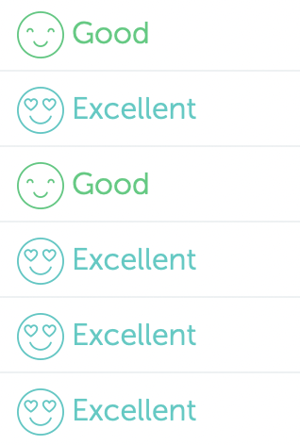
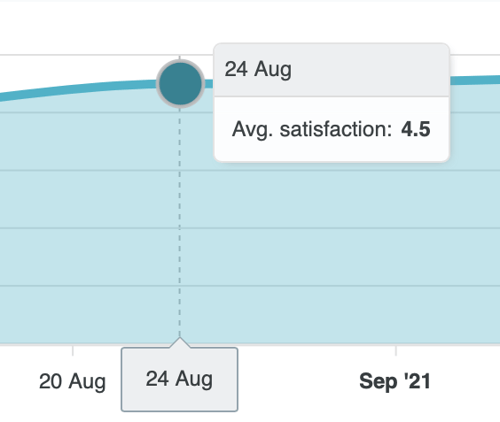
Customer-voted market leader committed to changing
the way we work.





Insights to get you started
Choosing the right workspace management solution is no small feat. We collected a
couple of insightful resources to help you identify your needs and navigate
the sea of options. Continue your research:
Workplace analytics: FAQ
Workplace analytics are the collection, analysis, and use of data to help employers gain insights into what is happening in their real-world work environment. The field draws on many different methodologies from disciplines such as operations management, industrial engineering, business intelligence and analytics, human resources management, and marketing research.
The potential advantages of successful workplace analytics programs include increased efficiencies in workflows; gains in customer satisfaction; heightened levels of employee engagement; workforce stability; reduced turnover costs associated with employee training or recruitment expenditures. Analytics have the potential to identify trends ahead of time so remedial steps can be put into place before they present any problems for an organization's operation.
YAROOMS offers embedded workplace analytics that measure workplace usage, employee satisfaction (via surveys), and people analytics that allow you to better understand how your team uses the office space.
The main benefit of workplace analytics is gaining a deep, data-based understanding of how your office space is used and what makes your employees feel satisfied (or dissatisfied with it). This will further enable you to make better business decisions with regards to your office space (including finding solutions such as sub-renting parts of the office when your employees are most likely to not be in the office).
Office space utilization is a measure of how efficiently office space is being used. It is typically measured by calculating the amount of floor space that is allocated to employees versus the amount of floor space that is actually being used by employees.
Office space utilization is typically calculated by measuring the amount of floor space that's dedicated to office use, and then dividing that number by the total amount of floor space in the building. This gives you a percentage of how much office space is being used.
There are a few other factors that can be included in the calculation, such as how much of the office space is being used for cubicles vs. private offices, or how many people are actually working in the office at any given time. But the basic calculation is simply measuring floor space and dividing by total floor space.
Employee satisfaction is usually measured through surveys or questionnaires. Employers will ask employees a range of questions about their job satisfaction, from how they feel about their work, to whether they feel appreciated and supported by their employer.
Employee satisfaction surveys can also help employers identify areas where they may need to make changes or improvements in order to keep their employees happy and productive. For example, if a majority of employees report that they don't feel valued by their employer, the company may want to consider implementing a recognition program or revising its employee benefits package.
There are a number of different ways that data is used in the workplace. Depending on the company, employees might use data to track sales goals, analyze customer trends, or measure productivity. In many cases, data is also used to evaluate employee performance and to identify areas where improvements can be made.
Overall, data plays a critical role in helping businesses make informed decisions and improve their overall performance. By analyzing data from various sources, companies can gain a better understanding of what's working and what isn't, and they can then adjust their strategies accordingly.
The first step is to align your goals with the business goals. Everyone's data will play a part in that, which is why the key to this process is enterprise-wide involvement. Once that's underway, it'll be important to secure buy-in at every level of the organization.
The last phase of this process can be summed up in four words: proactive alignment and assessment. Keep an eye on the numbers and always - always, always - reassess your strategy for including analytics throughout your workplace culture. It's what analytics professionals do best after all!
A data-driven culture isn't about finding a way or uncovering a secret formula; it starts from within people.




